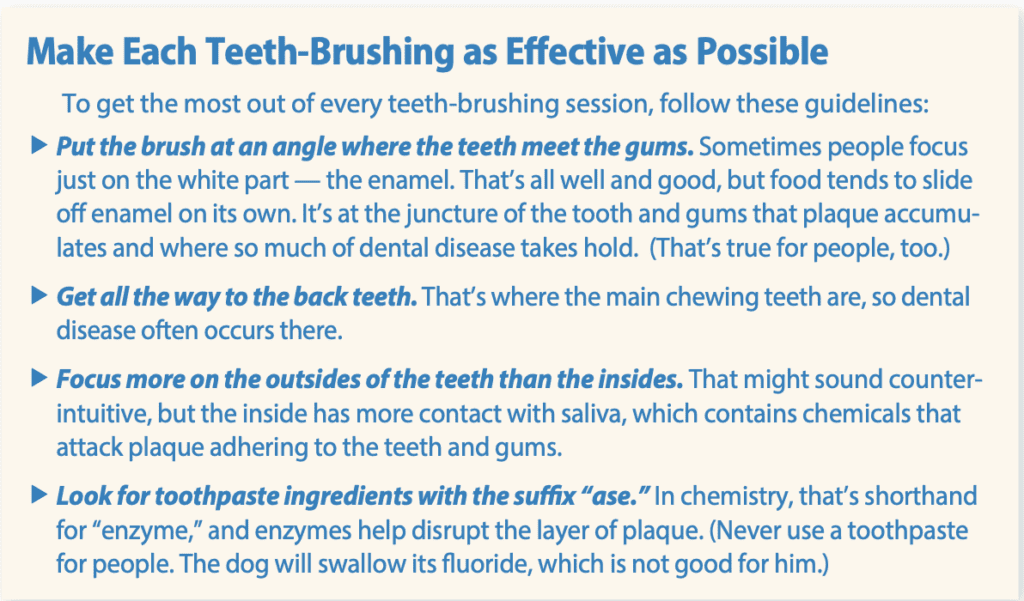James and Barbara Reed of Rockport, Massachusetts, are trying to get their 11-year-old shih tzu to accept a toothbrush. They adopted Wylie recently from an ailing female friend who has since died and report that he was in good shape except for decayed teeth. “We took him to the vet for an oral surgery that involved cleaning and extractions, which he tolerated well,” Mr. Reed reports. Since then, Mrs. Reed has attempted to get Wylie used to toothpaste from the pet store by putting it on pieces of meat. That worked well, but Mr. Reed is anxious about going the next step — getting Wylie used to a toothbrush.
That the Reeds honored their friend by taking in her dog, and of course also honored the dog by giving him a home rather than letting him go to a shelter, shows what loving and empathic people they are. Getting Wylie’s teeth brushed should be small potatoes next to that.
Still, while some dogs take quickly to teeth brushing, others need up to two months to get acclimated. Here is a set of steps, each of which might take days or weeks to get through.
1. Don’t start by brushing. Start just by taking him to the area of the house where you will be doing the brushing — perhaps on a counter since Wylie’s a little guy. Then simply handle his face for 30 to 60 seconds. Stroke his muzzle, lift his lip, and only look at his teeth. For his compliance, offer warm praise and a treat.
2. Do everything you were doing in step 1, but keep a toothbrush in one hand. Put a dab of the toothpaste on a treat that he likes, as Mrs. Reed has been doing, and then put some paste right on the brush so Wylie can get used to the bristles with toothpaste near his mouth. (Remember, he can smell it.) Finally, offer praise once again and a treat (even though he already had a treat).
3. Start brushing lightly. Slip the toothbrush between Wylie’s teeth and cheeks and go back and forth or in circular motions. Do this for only a few seconds, and follow it up with a treat. If it’s going okay, turn to the other cheek.
4. Shoot for no more than 60 seconds altogether — sides, back, front, outsides and insides. Eventually you should be able to give up the treats, or at least not give them every single time.
Note that not every dog will accept a toothbrush. Some prefer a finger toothbrush made especially for dogs — a thimble-shaped piece of rubber with bristles at the end that you put over your fingertip. You can even use gauze wrapped around your finger if
need be.

Note, too, that if Wylie never accepts having his teeth brushed — he is 11, after all, and has been uprooted — the world won’t come to an end. Yes, it’s much better if his teeth are brushed regularly in order to avoid gum disease and the tooth loss it can cause. But if your dog really, really hates it, it’s more important to have a good relationship with him and allow him a good-quality life. You don’t want a dog who runs away from you every time you go near him because he absolutely hates the thought of you getting near his mouth.





